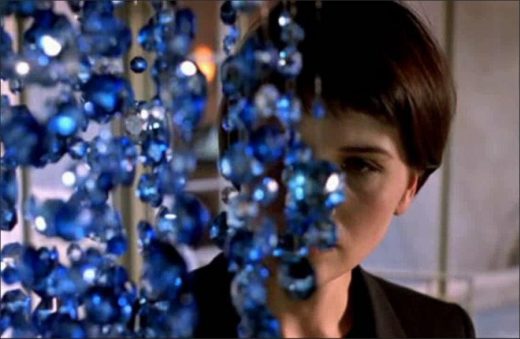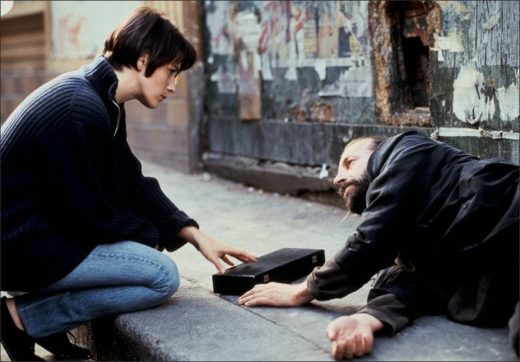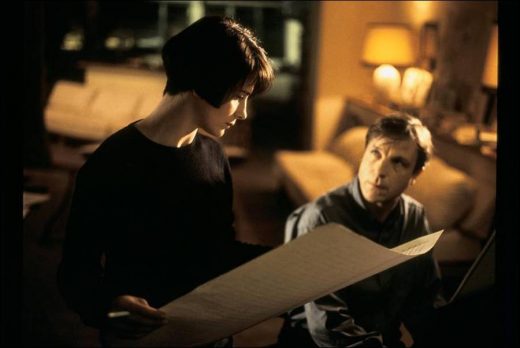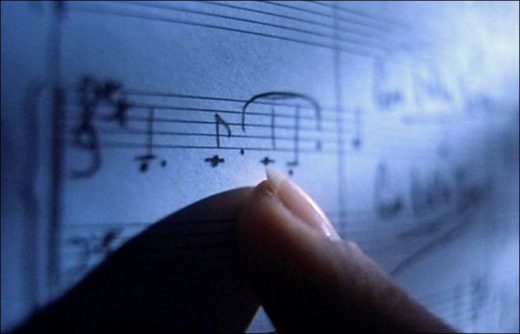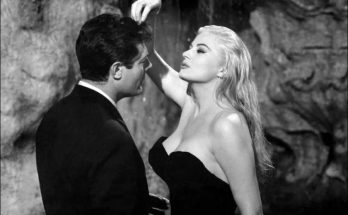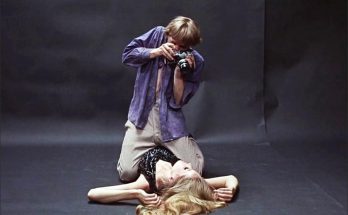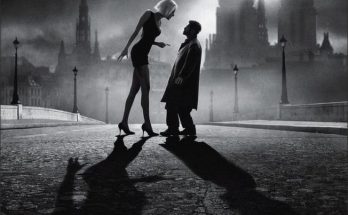Three Colors movie review. “There is so much that unites people. It doesn’t matter who you or I are, we feel the same pain when your tooth or my tooth hurts. It is the emotions that connect people because the meaning of the word ‘love’ is the same for everyone, either ‘fear or’ pain. We all fear the same things in the same way. That’s why I’m telling them, otherwise we’re splitting on other topics immediately. ” Krzysztof Kieslowski.
Krzysztof Kieslowski, known as the poet of the cinema, is Bléu (1993, Blue), the first and perhaps the most vocal film of the Color Trilogy, which has led to his fame in the international arena and which is symbolized by the colors of the French flag. In London, Julie, who lost her husband, a famous composer and her 5-year-old daughter, Anna, in a traffic accident, is concerned with turning her back on everything and trying to establish her own individual freedom as a result of the great trauma.
The story emphasizes that it is not possible to fully liberate from painful memories, from the past, everything that reminds us of the loved ones lost. In doing so, the director sews his camera to the invisible inner world of the individual, instead of a narrative that goes through events, and sometimes supports his idea with close-ups, sometimes with blue filters or acting (through behaviors and reactions).
Therefore, without going into details about how Julie has been in the past with her husband, daughter or other people in her life, she focuses only on her psychology and tries to make sense of her behavior by empathizing. Images such as close-ups, glass, piano cover, spoon, and eyeball reflections throughout the film serve this purpose and are shared with the viewpoint of the audience.
It is seen that Julie, who opened her eyes in a hospital room after the accident and watched her husband and daughter’s funeral on a portable TV brought by her husband’s assistant, Olivier, did not cry until the end of the film or in other words, confronted with her pain. Julie doesn’t want to face her pain because she thinks that bonding with someone and a common past created with them is a painful trap. Her husband’s assistant, Olivier, is in love with her, but according to her, it is a trap that will restrict the freedom of Olivier’s love and hurt her in the future.
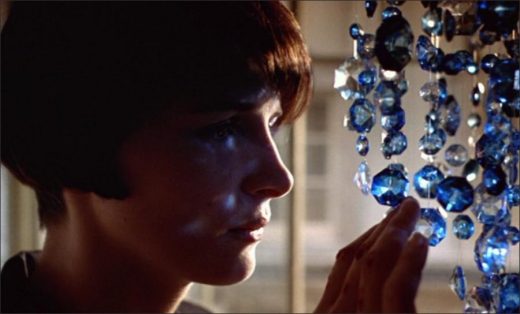
When she goes to visit her mother in the nursing home, she tells her mother that she is not watching TV, whether she is watching TV, because TV is also a trap that restricts her freedom. While talking to the realtor, he asks the man on the tape on his face and gets the answer that his cat is scratching. Even with this dialogue that seems to be meaningless, emphasis is placed on the fact that a real estate agent has a cat, a link that restricts freedom with Julie’s gaze.
Julie starts by removing all traces of the past in order to be free. He leaves his big manor and moves to an ordinary apartment, throws the unfinished concerto that his husband is working on to the garbage truck, sells all the items in his house, burns the items in his bag in the fireplace and eats his daughter’s candy with resentment. In his new life, he does not get close to anyone and builds a wall around himself.
The fact that the character does not mourn his loved ones against the expectation and prefer a simple life in the slum by pushing a considerable fortune with the back of his hand, in another respect, the fact that the next step cannot be predicted keeps the viewer’s curiosity awake until the end of the movie. Therefore, despite all its calmness, the film does not lose its fluidity and full attention is observed.
On the other hand, it is useful to talk about the use of the “blue” color in the film, which gives the movie its name, strengthens its expression and has many metaphorical meanings. Blue appears in many places in the movie. The paper of the candy that Julie’s daughter threw out of the car, her daughter’s room, the chandelier in the room, the folder with her husband’s compositions, the pen that Julie wrote and the pool where she often goes for swimming are blue. However, blue becomes not only an icon hidden in details or just a manifesto of the past, but a character in the film. This situation separates an ordinary story from its counterparts, making the movie a simple drama. Of course, the amazing music of Zbigniew Preisner and the contribution of the film’s immense cinematography cannot be ignored.
It is seen that blue is a very effective symbolic value in the transfer of the emotional depression of the character. According to the expression of the famous abstract painter Vasiliy Kandinsky, blue pulls down to infinite depths, evoking the flute sound with its opposing power. From this point of view, in the movie, it can be said that blue is an important tool that reflects the character’s emotion and symbolizes an emotion that reminds him of his past, great pain and pulls him down. For example, although he is away from everyone and everything that reminds him of the past, he strives to be a new Julie, leaving his old identity, he takes a blue lamp in his daughter’s room and hangs an item reminding him of his lost family.
At the beginning of the movie, when she went to her daughter’s room, the only thing left in the room was that she broke the crystals of the lamp with a feeling, then she caresses these crystals in her hand while she is recovering, hangs her in the middle of her new home but does not go and touch her crystals while she is standing in front of her eyes and finally shuddering in the background while one of her neighbors touched the lamp. the situation seems to be very uncomfortable.
Likewise, Kieslovski’s music that he praised by saying “we did not make the music of the movie, we shot movies according to the music” is like the ghost of the past just like blue. This ghost, who reminds Julie of her husband, captures her thoughts. Along with the scene from the hospital, the blue color gets darker or lighter in parallel with the rise and fall of the concerto playing at intervals. Like a stab-like pain instead of a wound, Julie suddenly buries in a dark blue, then the tone of the blue gradually turns on, as the pain has replaced her.
When the music rises, the dark blue is replaced by darkness; such as it becomes hard to breathe when the pain reaches its peak, and everything gets dark. While he is often in the indoor pool, where he goes to relax, this situation repeats, a part of the concerto composed by the husband on his head echoes and his pain and wound are exhausted. Unable to withstand the pain she suffered, Julie finds the escape diving into the pool and takes a fetal position in the water. When Freud says, when he is desperate against the difficulties of life, the individual (Julie) wants to return to the womb that he sees as the safest place for him.
Julie isolates herself in a childless apartment, in people who don’t know her in a strange neighborhood, but the ghosts of the past find her everywhere. When he leaves the hospital, he becomes the first journalist to knock on his door. While sitting alone in a cafe, the street musician plays music that resembles her husband’s unfinished concerto. The young man who witnesses the accident finds him. The symphony rising in his head constantly annoys him. And the mother in her new home will not allow her to forget the mouse and the cubs, to ignore the pain.
Olivier also annoys him by announcing that he will complete the concerto that her husband cannot finish. Because this is the only way for Julie to cry, make her speak, whether she wants it or not, to live and express her feelings. Indeed, it is so. These ‘ghosts’, which constantly annoy him, make him realize that not facing his pain does not bring freedom to try to get rid of the past. He completes the concerto, which is constantly rising in his mind, left by his husband, leaves his mansion to the child that will be born from his husband’s mistress and makes a new start with Olivier.
The entire movie resembles a concerto in which Julie is a solo instrument. A fast, invigorating entry, followed by a calm line and a fast, effective result. When the concerto, which rises in his mind during the film, is completed and the music becomes free / universal, Julie faces his pain, completes the mourning and finally cries.
All about Three Colors: Blue movie.
Three Colors: Blue (1993)
Directed by: Krzysztof Kieślowski
Starring: Juliette Binoche, Zbigniew Zamachowski, Julie Delpy, Benoît Régent, Hélène Vincent, Charlotte Véry, Emmanuelle Riva, Florence Vignon, Catherine Therouenne
Screenplay by: Krzysztof Piesiewicz, Krzysztof Kieślowski, Agnieszka Holland, Edward Żebrowski
Production Design by: Claude Lenoir
Cinematography by: Sławomir Idziak
Film Editing by: Jacques Witta
Makeup Department Jean-Pierre Caminade,Valérie Tranier
Set Decoration by: Lionel Acat, Christian Aubenque, Jean-Pierre Delettre, Julien Poitou-Weber, Marie-Claire Quin
Music by: Zbigniew Preisner
Distributed by: Miramax Films
Release Date: September 8, 1993
Visits: 78
